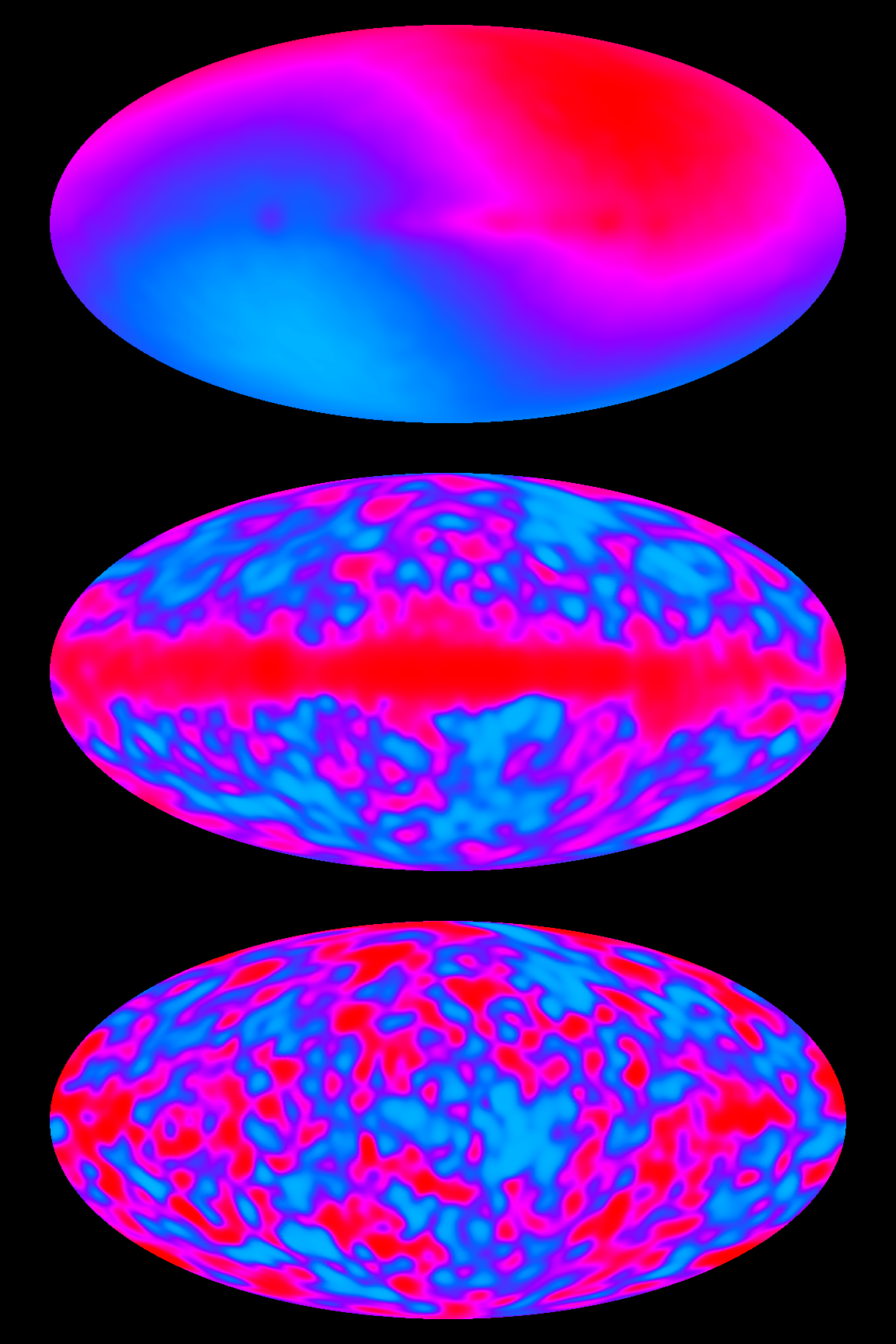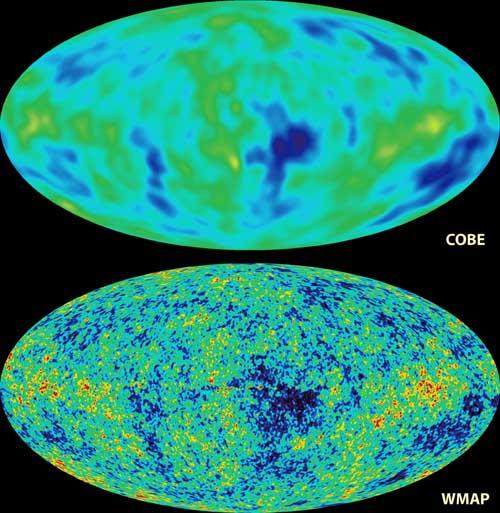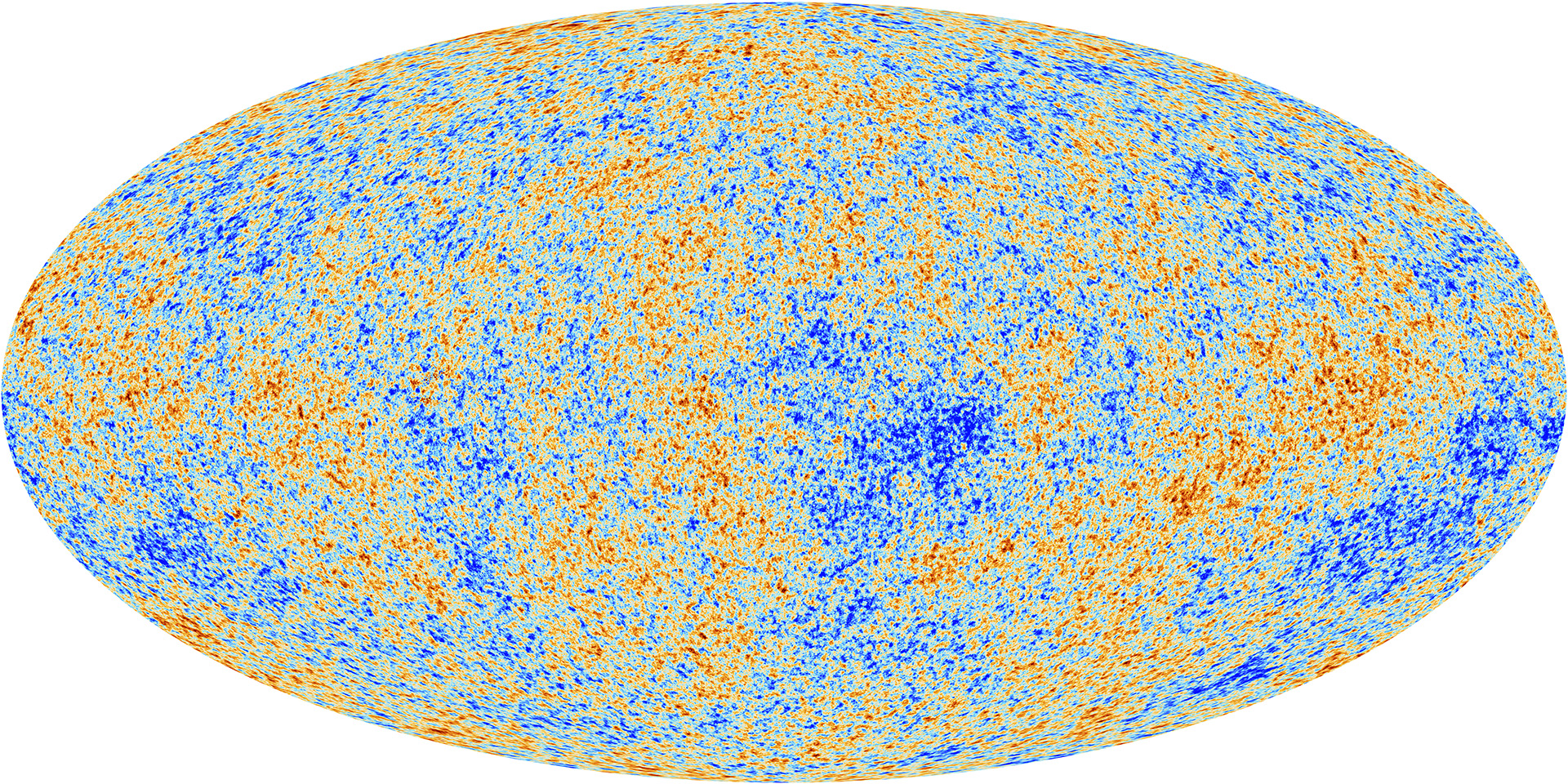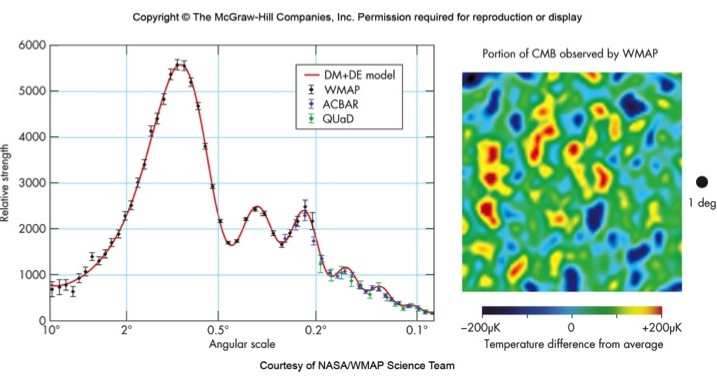[The antenna at Bell Lab ]
[The 2.725 +- 0.001 K CMB spectrum]
[The idea of the big bang ]
A rough estimate of the age of the universe ~ 1/H0 = 1010 h-1 yr
But, the universe probably does not expand at a constant speed...
- Density of radiation
ρr = u/c2 = 4σ T4/c3
where σ = 5.67 x 10-5 erg/sec/cm2/K4 is the Stefan-Boltzmann constant.
for T = 2.725 K
ρr = 4.6 x 10-34 g/cm3
- Average density of matter
Difficult to estimate, but one can measure halo gas temperature of galaxy clusters to count mass, which includes dark matter:
ρm = 2.4 x 10-30 g/cm3
(The density of luminous matter is about only 10% of that.)
- At present, it is a matter-dominated universe (later you will see it is actually a
'dark-energy-dominated universe'),
but in earlier days it was a radiation-dominated universe.
The transition occurred at about redshift z = 5200, when the temperature was about 2.725K x 5200 = 14000 K. It is about 24,000 years after the Big Bang.
At t = 380,000 years, z = 1100 (T ~ 2.725 K x 1100 = 3000 K).
[Era of recombination, after which the universe became transparent. ]
[The dipole moment in CMB, an excess of 0.00335 K in the direction of Leo. Our solar system is moving toward Leo at 370 km/sec. ]
After removing the dipole moment and the galactic foreground, at the scale of one degree or so, there are fluctuations less than 300 μK, i.e. < 10-4

[COBE map with resolution of about 7 degrees (1992)]
[BOOMERANG at the Antarctica]
[A patch of sky mapped by BOOMERANG (1998)]


[WMAP CMB map with resolution of about 0.3 degrees (2003) and Planck CMB map of 10 arcmin or so (2013); Check the LAMBDA site at NASA and also the PLANCK mission of ESA.]

[The power spectrum of CMB anisotropy (from WMAP)]